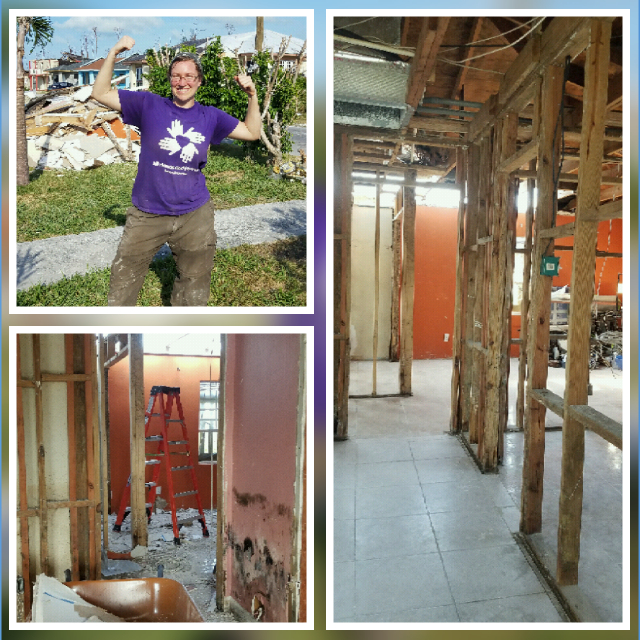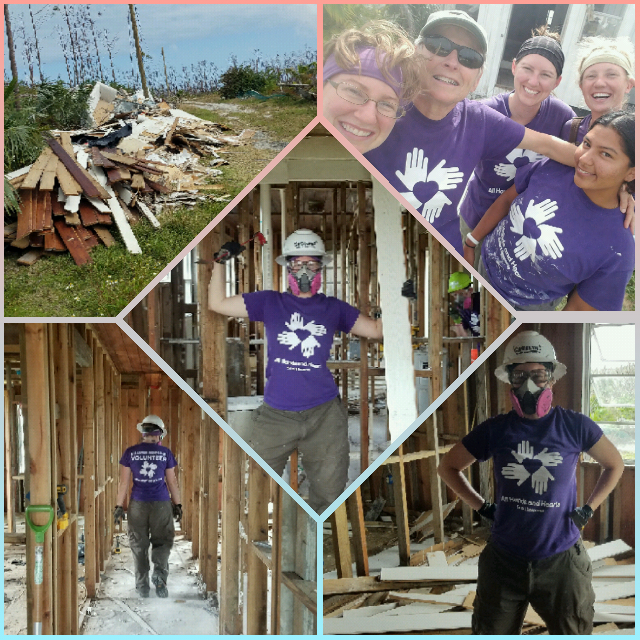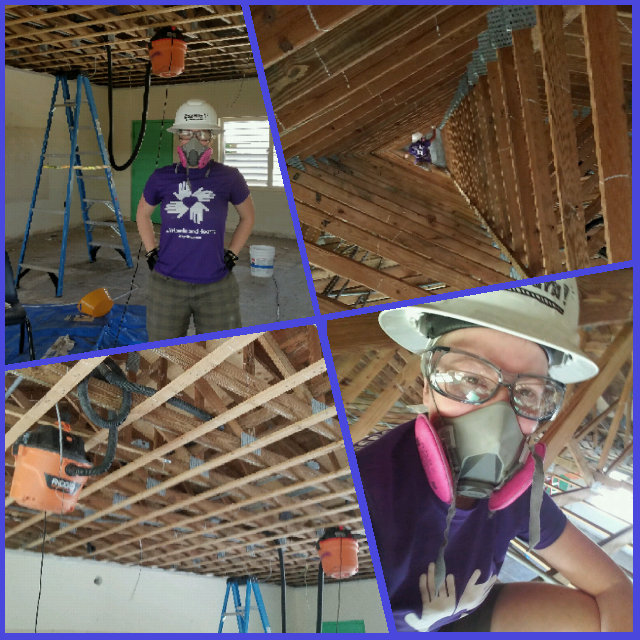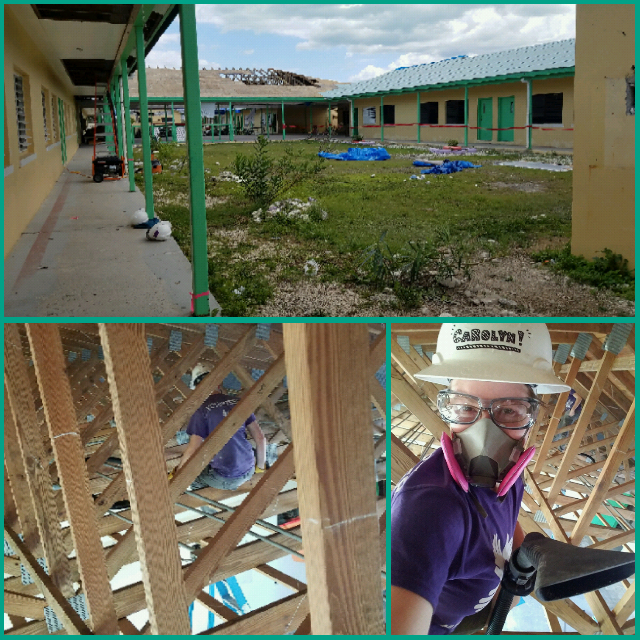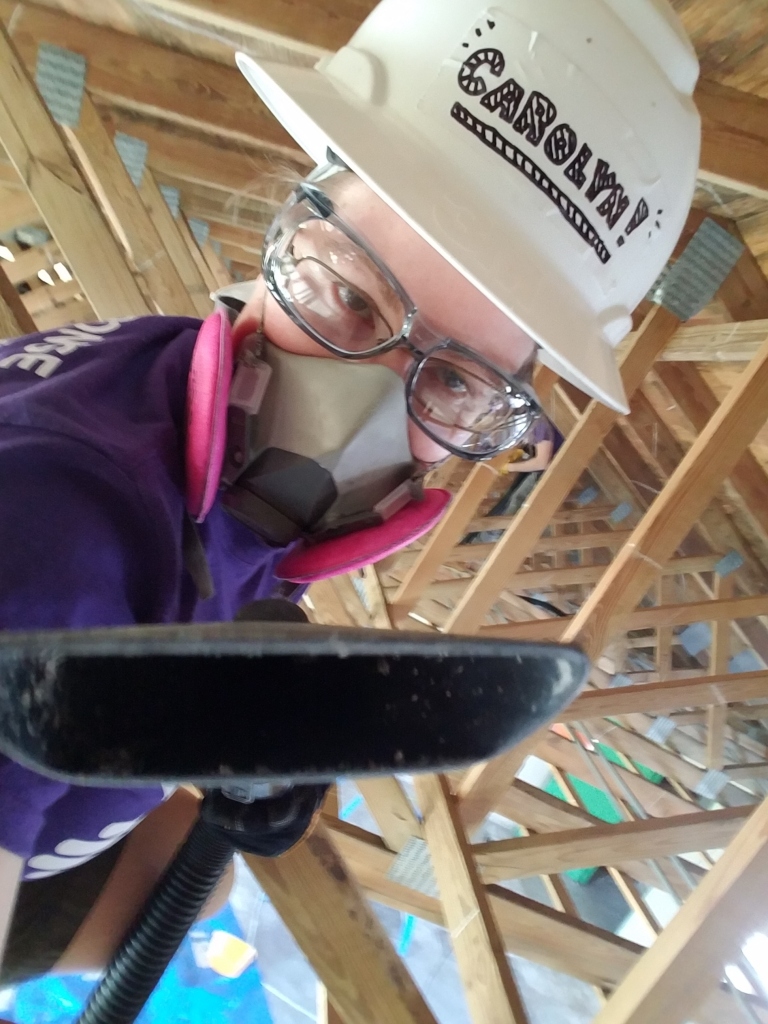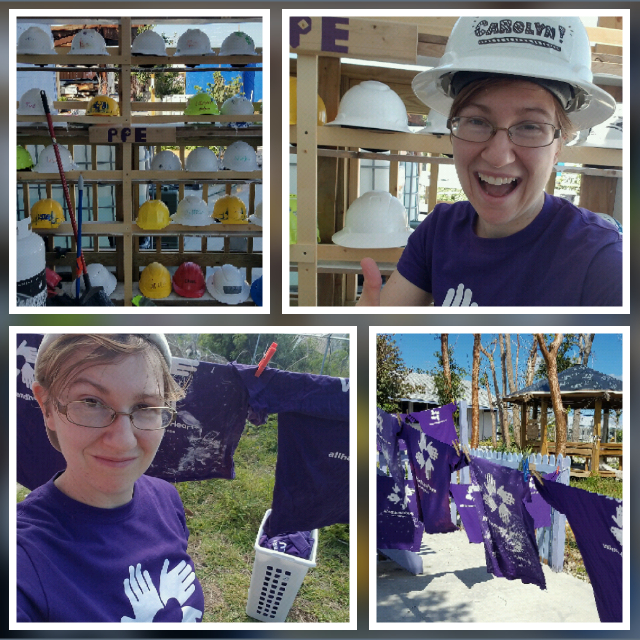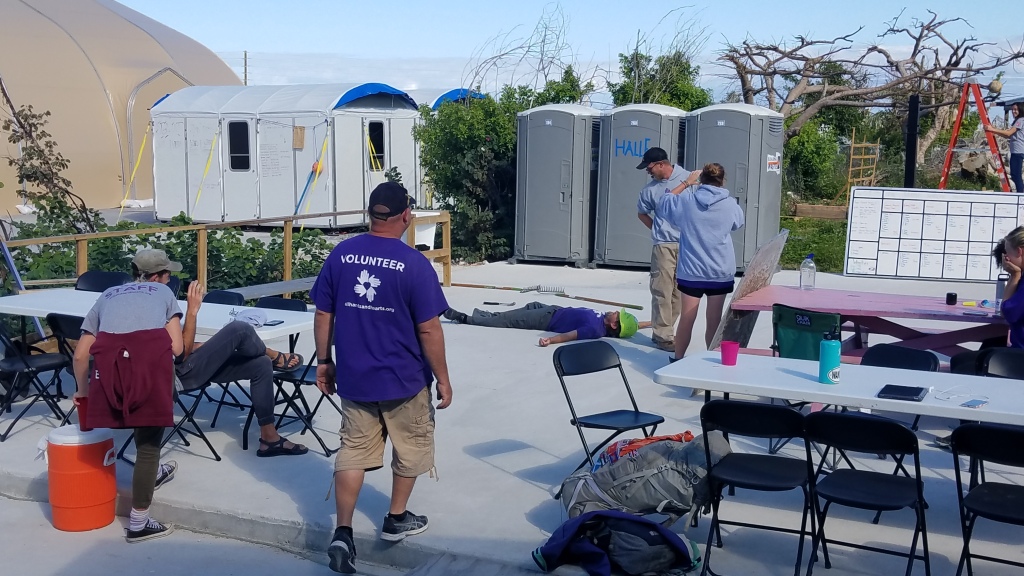I’m not ready to be home right now. I’m writing this post from my bedroom in NYC, but I’m not ready to be here. I arrived yesterday a little before midnight, one week earlier than planned. The reason, of course, is COVID-19.
On Thursday, March 12th, five of us AHAH volunteers were scrubbing the mold out of a house in Marsh Harbour. We paused at noon for our lunch break and Aileen, one of the program managers, stopped by with bad news. As of that morning, All Hands and Hearts was suspending all operations worldwide for two months. Volunteers at all 14 AHAH sites worldwide had 48-72 hours to change flights, pack up, and head out.
AHAH released a statement about the decision. At its core:
The communities we work within are affected by disasters and are oftentimes lacking the infrastructure necessary to address a public health crisis like the coronavirus. We must take caution to not potentially expose these vulnerable communities to the virus through accidental transmission from our teams.
Full statement here: https://stories.allhandsandhearts.org/urgent-covid19-update
After Aileen left we sat there in shock. Volunteers had been working on this house for over a week, but we were only at the scrubbing stage. Without vacuuming and spraying, and with no volunteers working for two months, there was a high chance mold would grow back. We wanted to finish, but scrubbing was pointless on that day, so we packed up the equipment and waited for a truck to bring us to base.

Meanwhile, AHAH teams at other sites made similar decisions; those who were mucking and gutting and those who were spraying went into overdrive and worked well past the end of our work hours to get the jobs done. The rest of us returned to base and joined the chaos of searching for new flights, cancelling old ones, and moving a huge amount of lumber into the Sprung for storage. The staff wanted to get volunteers out within 24 hours if possible, which meant endless goodbyes and a lot of packing up the entire base very quickly.

I’m not sure what else to say right now. I’m bummed to not be there. There were no Coronavirus cases in the Bahamas and I wish there was a way that AHAH could have stopped accepting new volunteers but let those of us who were already there stay. I understand the logic behind the decision they made but I wish it didn’t have to be this way, not just for the Bahamas site but all AHAH locations. In Puerto Rico, the scheduled end date of the program is two weeks from now, so they’d been working from the start with the plan to finish everything by the end of March. Now they are scrambling to get as much done as possible by Monday, knowing they will not complete some of their intended work and will not be returning to finish. It’s a tough situation, and I imagine that the AHAH board spent a long time thinking about this decision.
Thursday night was my last night on base, so I stood up and presented a rap I was going to share as my leaving speech next week. I felt like a superstar with all the cheers and applause and hugs I got after I finished. Music is truly powerful and I think I helped lift everyone’s spirits that evening. I’ll post the lyrics here and update this entry with an mp3 link when I record it (update: Here’s the audio).
Just stand (All Hands) and start (and Hearts)
and take the time to make a mark (your mark)
With hands (All Hands) and hearts (and Hearts)
break the mold and do your part (your part)One day at a time we get the job done
With your hands and mine we work hard and have fun
Grab your safety glasses, gloves and a hat
Purple shirts by the masses, we step up to batSleep beneath a mosquito net
Rise before dawn, yawn, and get set
Make breakfast and lunch, maybe PB&J
Take it to the trucks, muck and gut, start the dayJust stand…
Roll off to site, pass a bunch of destruction
To make the world right we gotta work on reconstruction
of houses and schools, and global attitudes as well
Global warming isn’t cool and it’s getting hot asHello folks, let’s begin the daily meeting
New face at the base, come up and give us a greeting
Let’s check out the board and talk about sites
Big ups before sup, and events for the nightJust stand…
Now it’s time for dinner made by hard-working cooks
Every meal’s a winner, tastes as good as it looks
There’s a line but it’s fine, one for veggie, one for meat
Fill a plate and dine, it’s a meet and greetCheck out the board to find your new location
Scrub, vacuum, spray, lord, I need a vacation
But really I’m kidding cuz I’m proud to be here
Living life to the fullest as an All Hands volunteerJust stand…
Big ups to the crew, that’s you, for what we do
Even with Coronavirus our commitment is true
Now we may be leaving but we know it’s not the end
So keep on believing that we’ll meet up againSoon we’ll write another chapter and I’ll see you in the rafters
Carolyn Stallard, March 12, 2020
Giving residents hope so they live happily ever after
Everybody in this place is smashing houses in the face
Keep on living life right, and you have a safe flight.
I wasn’t ready to say goodbye, I wasn’t ready to come back to NYC, but here I am, and I’m grateful that I get to have this roof over my head and a healthcare system that is functional enough to help out those who do become symptomatic with this virus. It’s ironic in a way; in the Bahamas there is ample hand sanitizer and TP and almost no talk of the virus, but lots of people are living in shelters or in mold-infested houses with broken roofs. Here in NY, stores are out of hand sanitizer and TP and there is endless talk of the virus, but people have houses with working roofs that they can self-quarantine in. Which reality would you choose?
Speaking of reality, as a volunteer said in his exit speech, “the future is here, just not evenly distributed.” I’d love to believe that what I was responding to in the Bahamas was an abnormal disaster, but I know better. I am already conscientious about my carbon footprint, but seeing the intense level of destruction in Marsh Harbour even six months post-Dorian makes me want to be even more conscientious about my environmental impact. One day that level of destruction will be even more routine than it’s already becoming, and I want to be able to say I did my part to keep the climate in check. Are you doing yours?
When I volunteer for things like this people tell me I’m amazing, but as a volunteer reminded us in her exit speech, what we are doing shouldn’t be considered amazing; it should be normal. Instead of telling me I do amazing things, find a way to do similar things, even if on a smaller scale. We all make an impact.
I’ll conclude with photos I haven’t shared in previous posts. Thanks for reading.


Bunks and mosquito nets 
The house we didn’t finish 
Me





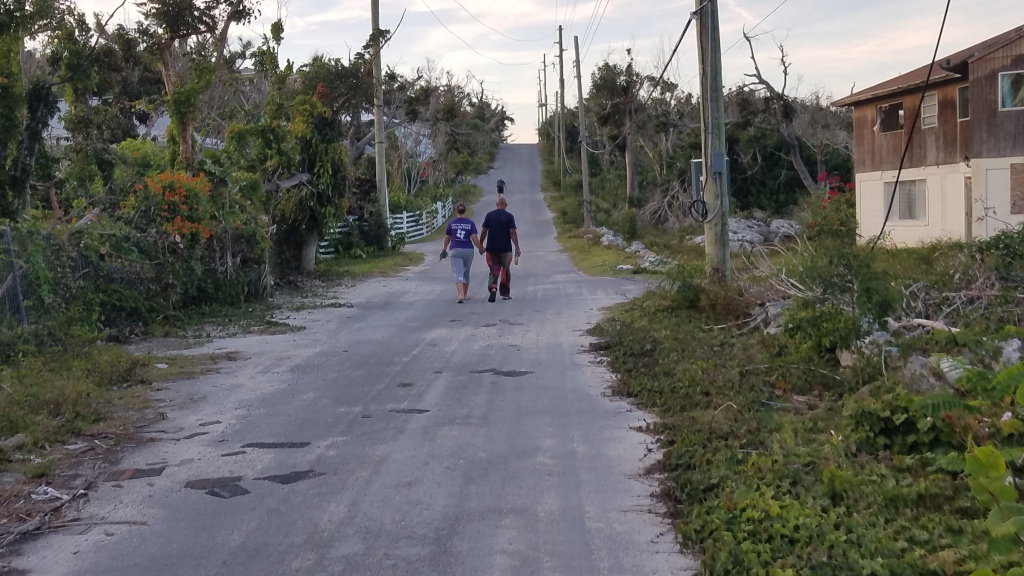

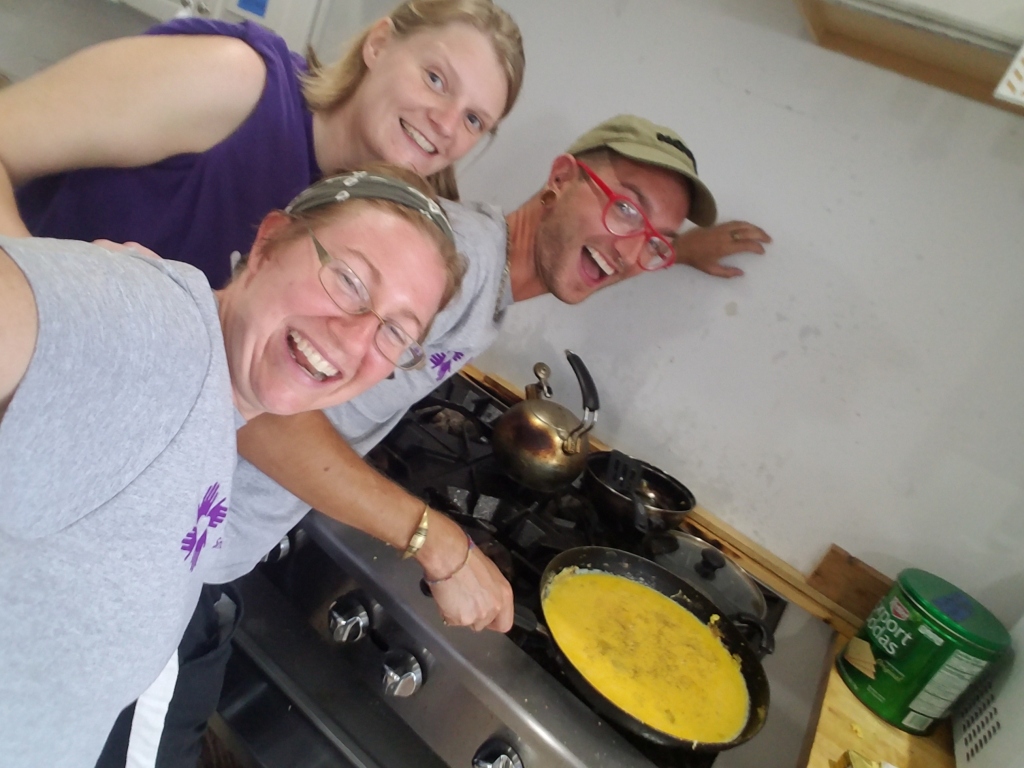
Team Egg.
We cleared the fridges and made eggs for everyone.
Team Table.
They worked hard moving tables and ended with a dance party.
Hard to see, but there is a half-sunken boat floating in this photo on the right. 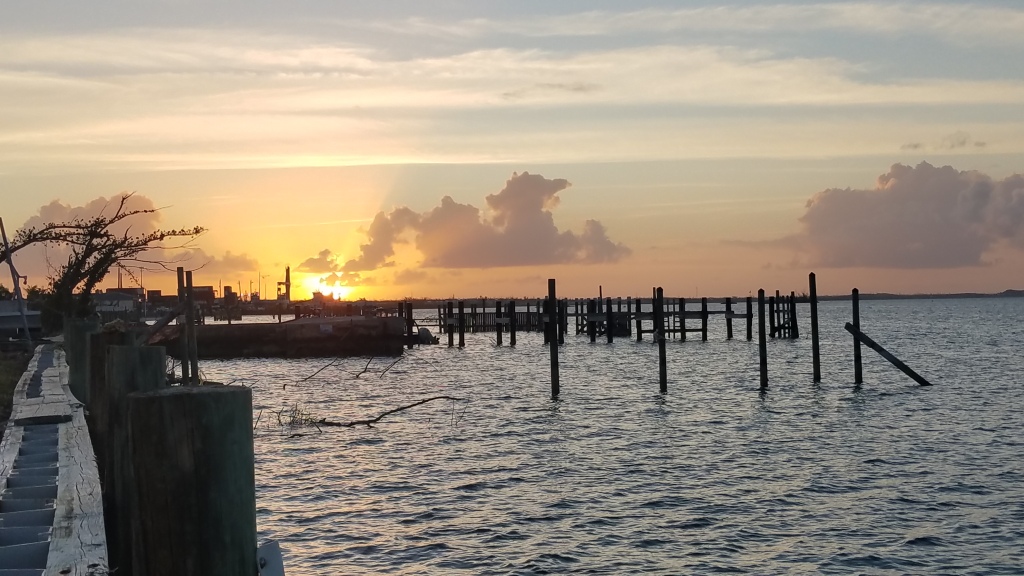
The last sunset.

Interested in supporting hurricane relief efforts in the Bahamas? Contribute to my fundraiser for All Hands and Hearts here. Thank you!



